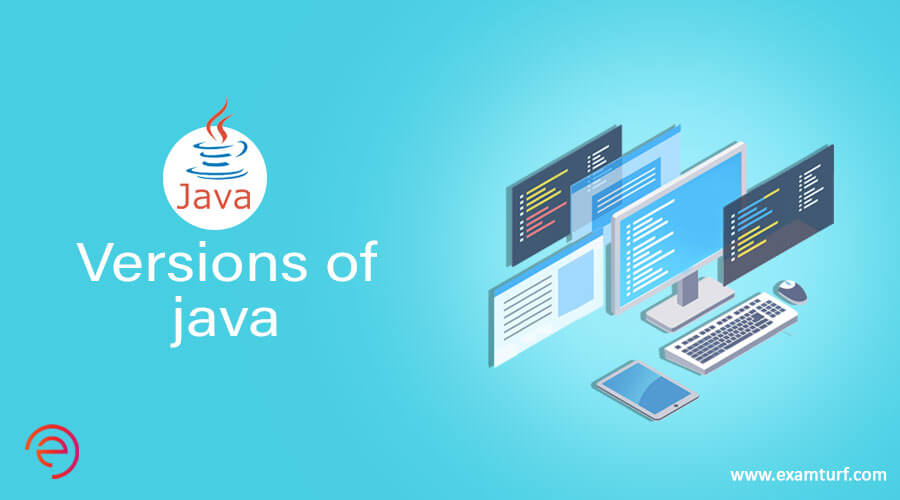
Introduction To Versions of Java
Let’s see by introducing Java and versions of java being one of the most popular programming languages currently in the world. Java is also one of the most used programming languages for developing any kind of software and applications for the consumer market. Millions of devices run on java-based software platforms around the world. From gaming to web apps to desktop apps, java plays a vital role in the development of all of these platforms. Java is your all-weather, dependable, tried and tested programming language which has been used ever since to deliver top quality and financially satisfactory products.
What Is Java?
Java is well and truly one of the most famous of all programming languages in the computer science universe. Its contributions are endless due to its designs and strengths.
So let’s see the origins and the basic definitions of Java in the below-mentioned following points:
- First of all, Java is a class-based and object-oriented programming language.
- It was developed by James Gosling in 1995 at Sun Microsystems, now taken over by Oracle, one of the biggest tech giants in the world.
- Its nature of write code once and then you can run it anywhere makes it different than programming languages.
- It means that you can write the codes in a java compiler (compiler is a platform where each programming language can run its code, each programming language has its own compiler) but you don’t need the compiler to run the code necessarily, you can do it anywhere.
- This feature makes Java a better platform than C or C, although falling in the same programming language category.
- Fun fact, the name ‘Java’ was named after an espresso bean when it was being developed at Sun Microsystems and they were trying to come up with a name for the upcoming programming language back in 1995.
- Java-based applications are typically compiled in bytecode.
- Java programming language runs typically based on three important components:
-
- JVM (Java Virtual Machine)
- JRE (Java Runtime Environment)
- JDK (Java Development Kit)
-
- JVM being the virtual machine where Java bytecodes are executed.
- JRE is the physical interface where JVM runs those bytecodes.
- JDK being the overall platform where the programmer writes and executes the codes through the JRE in the JVM.
- There are currently four types of Java platforms available in the market:
-
- Java SE (Java Standard Edition)
- Java EE (Java Enterprise Edition)
- Java FX
- Java ME (Java Micro Edition)
-
- JEE or Java Enterprise Edition is the most used platform of Java, popularly known as Advanced Java in the developers or programmer’s community.
Versions Of Java & Features
The different versions of Java from its origins till date are listed below along with some of its features:
- JDK Alpha and Beta: Its developed in 1995 was the first version released but was very unstable at first and had highly unstable binary and programming interfaces.
- JDK 1.0: It was released in 1996, a year later. It was a much stable version that allowed the use of keywords like private and protected to perform basic functions.
- JDK 1.1: Its released in 1997 had features like JavaBeans, JDBC (Java Database Connectivity), Java RMI (Remote Method Invocation), and also the concept of inner class came into existence in the JDK 1.1 version.
- J2SE 1.2: Its commonly known as Java 2 Standard Edition released in 1998, its existence tripled the size of java as it had features like Java plug-in, Java IDL (Interface definition language), and the collection framework.
- J2SE 1.3: Its codenamed Kestrel was released in 2000 which had features like Hotspot JVM, Java Platform Debugger Architecture or JPDA and Java Naming and Directory Interface or JNDI.
- J2SE 1.4: It was released in 2002 codenamed Merlin was the first version to be released under the Java community process has to feature IPv6, Image I/O, logging API, and improved libraries.
- J2SE 1.5: Its codenamed Tiger was released in 2004, later it was renamed Java 5.0. It included many improved features like Unboxing, Enumerations, used Metadata and Static imports.
- Java SE 6: Its codenamed Mustang released in 2006 has scripting language support, improved web service support, generic API, and JDBC 4.0 support.
- Java SE 8: Its releases in 2014 were codenamed Spider had language-level support for lambda expression, annotation of java types, repeating annotations, and also provided date and time APIs.
- Java SE 9: It had money and currency API support, tighter integration with JavaFX, and automatic scaling and sizing support was released in 2017.
- Java SE 10: Released in 2018 has local variable type interfaces, time-based release versioning, additional Unicode Language-tag extensions, thread-local handshakes and garbage collector interface type features, and more.
Java Applications
Here are the various real-life applications of Java presented for you according to its popularity:
- Java Mobile Applications
- Java Web-based Applications
- Java Enterprise Applications
- Java Gaming Applications
- Business Applications
- Scientific Applications
- Java Desktop GUI Applications
- Java Big Data Applications
- Java Cloud-based Applications
So these are the most important and popular applications developed based on the Java platform.
Conclusion
So we can surmise that Java is an all-weather, multi-faceted, broad-based, assertive, and dynamic programming language but at the same time is relatively easier and simple compared to C and C as its platform-independent nature enables it to execute multiples processes anywhere without the need of a compiler. These advantageous features of Java make it one of the most popular & widely used programming platforms by millions of this world.
Recommended Articles
This is a guide to Versions of Java. Here we discuss what is Java and the versions of java & its features along with applications. You can also go through our other related articles to learn more –
